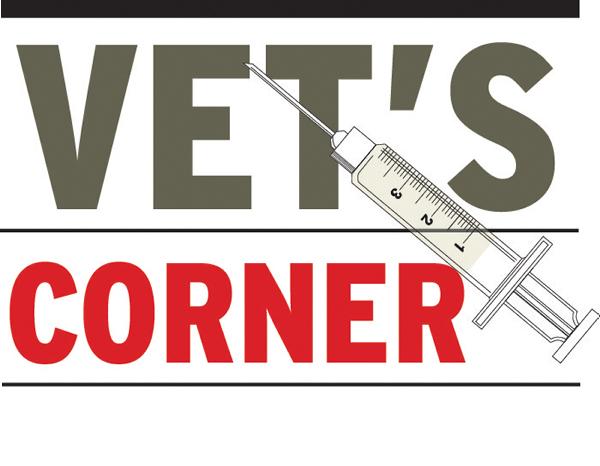One night last week, I sat down to look over our September workload – reviewing the calls done and indeed how some of the more difficult cases had turned out.
The nature of calls in veterinary practices have changed over the 17 years since I qualified from UCD and it is fair comment that herd health planning, preventative medicine and investigation of disease outbreaks is a larger part of the workload now than it was then.
Having said that, farmers still rely on us to attend and cure sick animals at all hours of the day and night.
Something struck me about September – approximately 30% of our sick calls were diagnosed as clinical cases of parasitism.
Parasites are ever-present and we often associate parasites with lack of thrive or poor weight gains. Farmers are always surprised when the animal they present with coughing, scour or indeed as sudden death has been caused by parasites.
This September we had countless cases of this. Here are a few examples:
A six-month-old suckler weanling with abdominal pain and profuse scour – he was treated symptomatically on day one with anthelmintics, antibiotics, anti-inflammatories and oral fluids. Faecal samples taken day one returned results of 1,550 strongyle eggs per gramme. This animal had clinical ostertagiasis. He responded to treatment over five days and was almost lost.An 18-month-old Charolais-cross heifer approximately 480kg was found dead and post-mortemed – a diagnosis of parasitic pneumonia was made, ie hoose. Other animals in the group were immediately treated with levamisole. A group of 25 bucket-reared dairy-cross weanlings on grass and 1kg meal had scour and weight loss with coughing – they had been treated with an ivermectin 10 days previously. Nasal swabs and faecal samples were submitted to the laboratory. Results showed PI3 on nasal swabs and rumen fluke in the faecal samples. The batch were treated for rumen fluke and improved over the following week. A fourth-lactation dairy cow presented with scour, milk drop and a swollen head – on clinical examination, the swelling was submandibular oedema (bottle jaw). Her mucous membranes had a yellow tinge. Faecal samples and blood were collected and my suspicions were confirmed – high levels of liver fluke. This cow, from a winter milking herd, had been dosed with a flukicide effective against adult fluke only the last time she was dried off, which was February 2016.Parasites still cause significant losses for farmers. It is very important to seek veterinary risk assessment of your parasite control plan.
Getting the plan right for your farm will result in healthier animals and more profit.
Conor Geraghty MVB Cert DHH works at Geraghty & Neary Veterinary Surgeons, College Rd, Mountbellew, Co Galway. Geraghty & Neary Veterinary Surgeons are part of XLVets. XLVets is a group of progressive practices who are working together to achieve a better future for agriculture and veterinary in Ireland. For further information, go to www.xlvets.ie.
One night last week, I sat down to look over our September workload – reviewing the calls done and indeed how some of the more difficult cases had turned out.
The nature of calls in veterinary practices have changed over the 17 years since I qualified from UCD and it is fair comment that herd health planning, preventative medicine and investigation of disease outbreaks is a larger part of the workload now than it was then.
Having said that, farmers still rely on us to attend and cure sick animals at all hours of the day and night.
Something struck me about September – approximately 30% of our sick calls were diagnosed as clinical cases of parasitism.
Parasites are ever-present and we often associate parasites with lack of thrive or poor weight gains. Farmers are always surprised when the animal they present with coughing, scour or indeed as sudden death has been caused by parasites.
This September we had countless cases of this. Here are a few examples:
A six-month-old suckler weanling with abdominal pain and profuse scour – he was treated symptomatically on day one with anthelmintics, antibiotics, anti-inflammatories and oral fluids. Faecal samples taken day one returned results of 1,550 strongyle eggs per gramme. This animal had clinical ostertagiasis. He responded to treatment over five days and was almost lost.An 18-month-old Charolais-cross heifer approximately 480kg was found dead and post-mortemed – a diagnosis of parasitic pneumonia was made, ie hoose. Other animals in the group were immediately treated with levamisole. A group of 25 bucket-reared dairy-cross weanlings on grass and 1kg meal had scour and weight loss with coughing – they had been treated with an ivermectin 10 days previously. Nasal swabs and faecal samples were submitted to the laboratory. Results showed PI3 on nasal swabs and rumen fluke in the faecal samples. The batch were treated for rumen fluke and improved over the following week. A fourth-lactation dairy cow presented with scour, milk drop and a swollen head – on clinical examination, the swelling was submandibular oedema (bottle jaw). Her mucous membranes had a yellow tinge. Faecal samples and blood were collected and my suspicions were confirmed – high levels of liver fluke. This cow, from a winter milking herd, had been dosed with a flukicide effective against adult fluke only the last time she was dried off, which was February 2016.Parasites still cause significant losses for farmers. It is very important to seek veterinary risk assessment of your parasite control plan.
Getting the plan right for your farm will result in healthier animals and more profit.
Conor Geraghty MVB Cert DHH works at Geraghty & Neary Veterinary Surgeons, College Rd, Mountbellew, Co Galway. Geraghty & Neary Veterinary Surgeons are part of XLVets. XLVets is a group of progressive practices who are working together to achieve a better future for agriculture and veterinary in Ireland. For further information, go to www.xlvets.ie.






 This is a subscriber-only article
This is a subscriber-only article










SHARING OPTIONS: